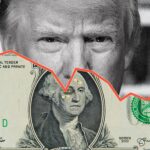The U.S. Treasury is taking a hard line on cross-border payment systems that stray from its standards. Brent Neiman, Assistant Secretary for International Finance, laid it out clearly: any system failing to meet U.S. expectations could destabilize global markets and hurt economic security.
This statement comes as countries, specifically those in the BRICS+ alliance move to create their own payment systems, designed to bypass Western platforms like SWIFT.
“The United States must lead when it comes to cross-border payments,” Neiman said during a speech at a Federal Reserve Bank of New York conference.
His prepared remarks stressed that America needs to ensure any widely used global payment system upholds high standards, particularly in fighting financial crimes. The message is loud and clear: fall in line or risk being labeled a threat to international stability.
Treasury’s global dominance playbook
BRICS countries recently signed a communique to explore payment systems that sidestep Western-controlled networks. Their goal? Financial independence. This doesn’t sit well with Washington, where Treasury officials want to maintain the dollar’s dominance in global finance.
Neiman argued that U.S. leadership in setting payment standards benefits everyone—America, its allies, and trading partners. “Enhancing connectivity with the U.S. invites deeper and more transparent commitments to shared policy goals,” he said, pointing to illicit finance as a prime example.
The Treasury wants to tighten the screws on stablecoins—digital assets pegged to traditional currencies. Right now, regulation is a mess, with rules varying wildly from state to state. Neiman thinks the U.S. needs a clear federal framework for stablecoins and nonbank payment services to prevent loopholes and risks.
The BRICS threat
For years, the U.S. has used its control over the global financial system as a political weapon. Sanctions, dollar freezes, and cutting off countries from SWIFT have been the go-to moves.
Just ask Russia, whose $300 billion in reserves was frozen after its invasion of Ukraine. The message to the world is unmistakable: If you step out of line, your money isn’t safe.
That’s why Russia and China are pushing for alternatives. They’re tired of U.S. dominance and want a financial system where the dollar doesn’t call the shots. BRICS leaders are spearheading efforts to trade in local currencies and build payment networks that don’t rely on SWIFT.
These systems aim to shield their economies from sanctions and give them more financial autonomy. Sure Trump is president now and Putin said he is no longer invested in the dollar’s demise, but what happens when the next president rolls by and happens to be a Democrat?
Neiman warned that “poorly designed payment systems” could wreak havoc on global markets. He also called out projects that “seek to wipe the slate clean” without proper oversight, labeling them risky and irresponsible.
Why the dollar still rules (for now)
The U.S. dollar has been the backbone of global finance for decades. Most international trade, from oil to electronics, is priced in dollars. But as the BRICS nations grow stronger, they’re challenging this status quo.
Their alternative systems could weaken the dollar’s grip on global markets, which scares the Treasury. Neiman wants the U.S. to modernize its own payment networks to stay ahead.
Faster, cheaper, and more secure dollar-based systems would help keep America at the center of global finance. “Making the dollar-oriented system faster and more efficient would strengthen our hand in upholding U.S. values,” he said.
The crypto factor
Let’s talk about the elephant in the room: blockchain and crypto. These technologies have completely transformed how money moves across borders. Blockchain networks allow people to send money without banks or middlemen.
They’re faster, cheaper, and immune to government interference — everything the Treasury hates.
Cryptocurrencies also challenge the dollar’s dominance. Imagine a world where businesses use Bitcoin instead of dollars to pay for goods. It’s already happening in small pockets around the world. And then there’s stablecoins.
Neiman sees stablecoins as both a risk and an opportunity. He called for a federal framework to control their use, making sure they don’t bypass the traditional financial system. Right now, the lack of consistent rules is a glaring weak spot, and Treasury officials know it.
Land a High-Paying Web3 Job in 90 Days: The Ultimate Roadmap










